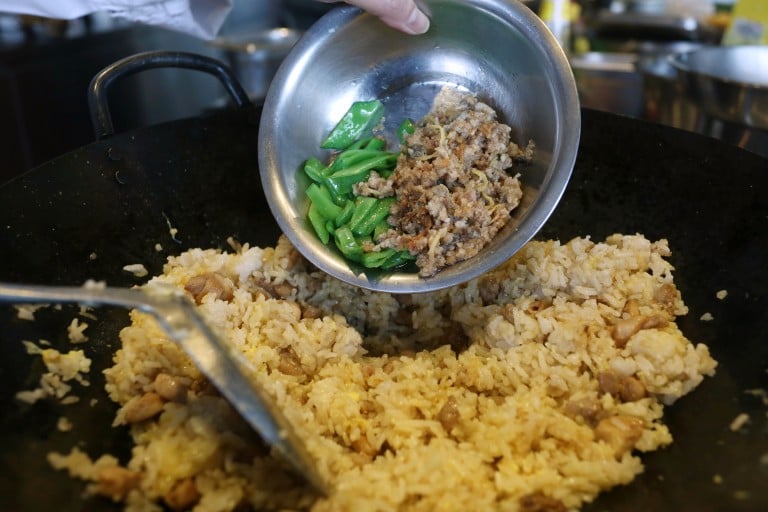
Whenever people turn up their noses at the pungent scent of salted fish, I remind them that other cultures use ingredients with a strong smell (some would call it “stink”) that is far worse than the taste: cheeses such as époisses, mont d’or and limburger in Europe; durian and belacan (fermented and dried shrimp paste) in Southeast Asia; kimchi in Korea; sauerkraut in Germany; and natto in Japan. (I’ve yet to smell and taste Icelandic hákarl, or fermented shark.)
Give them a chance and you’ll find these ingredients are delicious – in fact, you might not even notice the smell.
Salted fish is meant to be eaten in small quantities, almost as a condiment, to flavour a mouthful of rice or steamed pork patty.
If you are new to eating salted fish, use the smaller amount called for in this recipe. If you love salted fish, use more. Even in its purest forms – steamed with lots of shredded ginger, or fried and served with a dipping sauce of pepper, salt and fresh lime juice – you should take small portions and eat it with rice.
As with every recipe for fried rice, start with cold (or at least room temperature) cooked rice. It doesn’t work with rice hot out of the cooker, which becomes heavy and stodgy when stir-fried. If you don’t have leftover rice in your fridge or freezer, spread out freshly cooked rice on a tray and leave at room temperature to dry out for an hour or two.
There are many types of salted fish. Some are bony and best used for soup stocks and sauces; others are moist and meaty, almost semi-dried, and when squeezed, your fingers will leave an indentation. For this dish, choose fish that’s firm but still pliable and will hold its shape when cubed and fried, or the moist and meaty type, which disintegrates into small flakes when fried.
If you are new to eating salted fish, use the smaller amount called for in this recipe. If you love salted fish, use more.

Cut the chicken into small cubes and place in a bowl. Add the soy sauce, rice wine, sugar, pepper, cornstarch and ¼tsp salt and mix well. Set aside while preparing the other ingredients.

Cut the snow peas on the diagonal into 5mm (¼in) pieces. Slice the ginger into thin shreds. Cut the salted fish into 5mm (¼in) cubes. Use lightly dampened hands to break the cold rice into individual grains; wet your palms as necessary if the rice sticks to them. Whisk the egg in a small bowl. Cut the lettuce leaves in half, then stack them and slice into strips about 5mm (¼in) wide. Cut the spring onions into 5mm (¼in) pieces.
Heat a wok over a high flame. When the wok is hot, add 10ml (2tsp) of oil. Add the snow peas and stir-fry for about a minute. Use a wok spatula to scoop the snow peas from the wok, leaving behind as much oil as possible.

Add 15ml (1 tbsp) of oil to the wok (no need to wash it) and place over a high flame. When the oil is hot, add the salted fish and fry, stirring often, until the pieces are golden brown. Remove the salted fish from the wok, leaving behind as much oil as possible, and add to the bowl with the snow peas.

Add 10ml to 15ml (2 to 3tsp) of oil to the wok (again, no need to wash it) and place it over a high flame. When the oil is hot, add the chicken and its marinade. Stir-fry until the chicken is almost cooked, about a minute.

Add the rice to the wok and sprinkle with one teaspoon of salt. Stir-fry until the rice is hot, then use the wok spatula to push the rice to the sides of the wok, creating a well. Pour the egg into the well and leave to cook for about 30 seconds, or until it starts to set around the edges. Stir the egg with the tip of the spatula and cook until it’s softly set.

Mix the egg into the rice, then return the snow peas and fish to the wok. Mix well so all the ingredients are evenly distributed throughout the rice. Taste for seasonings and add salt, if necessary. Stir-fry until the ingredients are hot, then add the lettuce and mix well.
Add the spring onion and mix again, then scoop the ingredients onto a serving dish. Serve immediately.